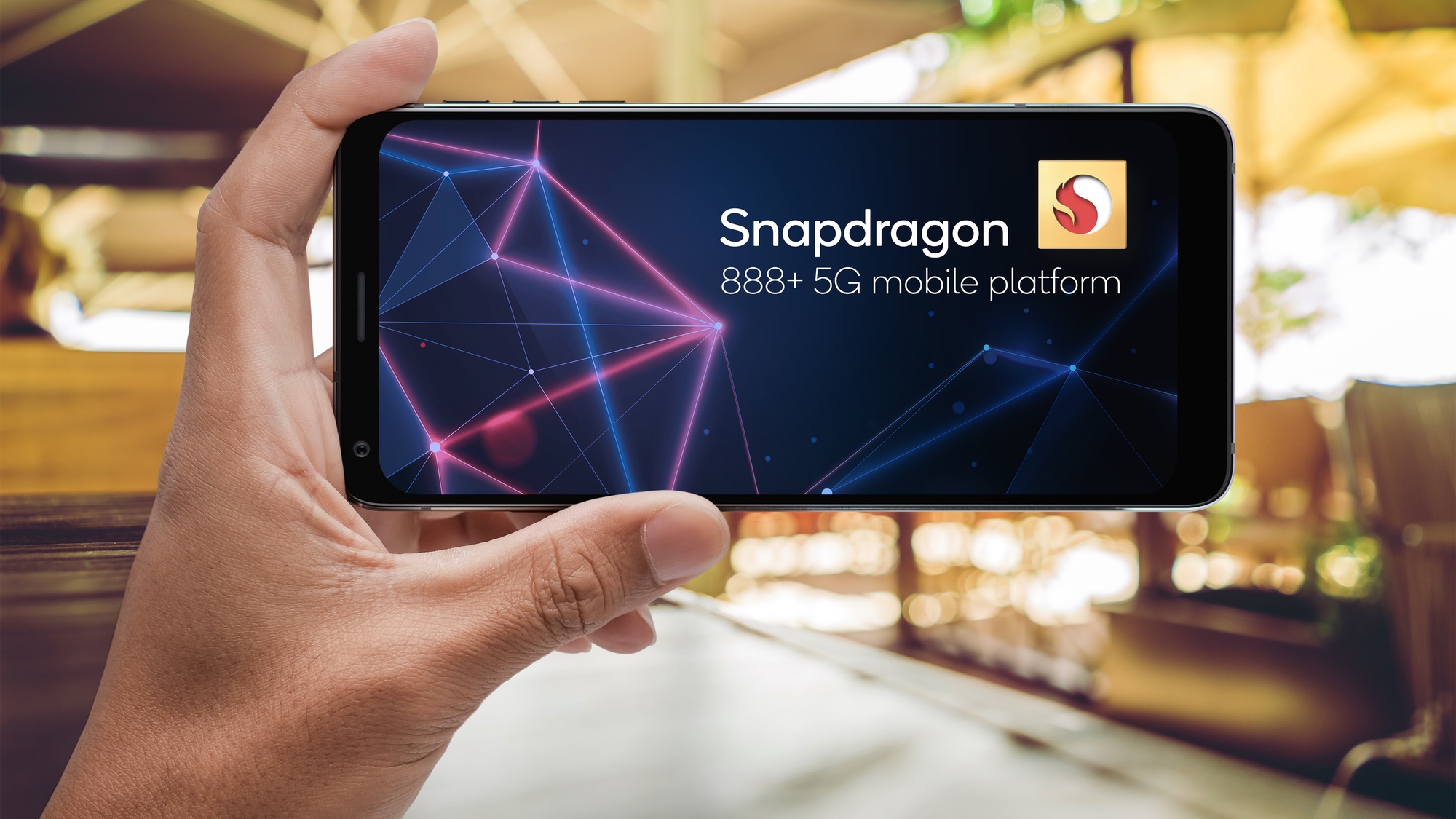Qualcomm Snapdragon 888 Plus revealed — what phones will it power?
Galaxy Z Fold 3, Galaxy Z Flip 3 could be among the first Snapdragon 888 Plus-powered phones

The chip that will power high-end Android phones in the second half of the year is making its debut at Mobile World Congress in Barcelona this week. And Qualcomm is promising a system-on-chip that's a lot smarter than its predecessor.
The Snapdragon 888 Plus, shown off at a Qualcomm keynote today (June 28) , improves the hardware and optimizes the software for the Hexagon 780 processor that powers Qualcomm's 6th generation AI engine. The result is that this chip can produce 32 trillion operations per second (TOPS) — a 20% increase over the TOPS performance of the Snapdragon 888 chipset released last December.
- Best 5G phones right now
- Find the best unlocked Android phones
- Plus: I used the OnePlus 9 for three months — and it changed my mind
The Kryo CPU on the Snapdragon 888 Plus system-on-chip gets a boost, too, with Qualcomm increasing the speed of the prime core to 3GHz; it was 2.84GHz on the Snapdragon 888. That should translate to improved app response time and browser performance, among other benefits.
Otherwise, the capabilities of the Snapdragon 888 Plus match what Qualcomm delivered with the Snapdragon 888, including 5G connectivity, Snapdragon Elite Gaming features that aim to bring console gaming to mobile and a Spectra 580 triple ISP capable of capturing from up to three lenses simultaneously. Like the Snapdragon 888 before it, the 888 Plus will be the silicon of choice for the best Android phones coming out the rest of 2021.

Specifically, Qualcomm expects phones powered by the Snapdragon 888 Plus to start appearing during the third quarter of the year. That timing fits in well with the rumored August unveiling of Samsung's latest foldable phones. Both the Samsung Galaxy Z Fold 3 and Galaxy Z Flip 3 are expected to launch in August, and past versions of those phones have also been powered by the best version of Qualcomm silicon available at the time of their release.
The same can be said for OnePlus' second-half flagship phone this year, which is rumored to be called the OnePlus 9T. While last year's OnePlus 8T stuck with the same Snapdragon 865 system-on-chip found in other OnePlus 8 phones, the OnePlus 7T released the previous year did upgrade to a Snapdragon 855 Plus from the Snapdragon 855 chipsets in the OnePlus 7 phones.
Typically, the T model of OnePlus' flagship phones comes six months after the phone maker's last flagship handsets came out. The OnePlus 9 and OnePlus 9 Pro both debuted in March.
Sign up to get the BEST of Tom's Guide direct to your inbox.
Get instant access to breaking news, the hottest reviews, great deals and helpful tips.
Of course, neither Samsung nor OnePlus were among the phone makers pledging support for the Snapdragon 888 Plus during Qualcomm's announcement today. While the chip maker doesn't announce which unreleased phones are using its upcoming silicon, it did include testimonials about the Snapdragon 888 Plus from Motorola, Asus' ROG division, Vivo, Xiaomi and Honor.
Qualcomm and 5G
The arrival of the Snapdragon 888 Plus covered only a bit of the news in Qualcomm's keynote, with the chip maker also using the spotlight of Mobile World Congress to tout the growth of millimeter wave 5G. That's the high-speed version of 5G that delivers performance that's much faster than LTE. Thus far, mmWave has been primarily implemented in the U.S., where it's a big part of Verizon 5G.
That's changing, according to Qualcomm, which says that 40-plus global operators and device makers around the world are committed to supporting mmWave 5G. (AT&T, US Cellular and Motorola were among the U.S. firms cited by Qualcomm.) There are currently more than 120 devices that support mmWave 5G, with nearly all of them powered by Snapdragon.
And the speeds should figure to increase. Qualcomm says that its upcoming Snapdragon X65 modem, due out later this year, can now top 10 Gbps in over-the-air testing. While Qualcomm likely hit that figure in ideal conditions, it still suggests that faster speeds are ahead as 5G continues to roll out.
Philip Michaels is a Managing Editor at Tom's Guide. He's been covering personal technology since 1999 and was in the building when Steve Jobs showed off the iPhone for the first time. He's been evaluating smartphones since that first iPhone debuted in 2007, and he's been following phone carriers and smartphone plans since 2015. He has strong opinions about Apple, the Oakland Athletics, old movies and proper butchery techniques. Follow him at @PhilipMichaels.

